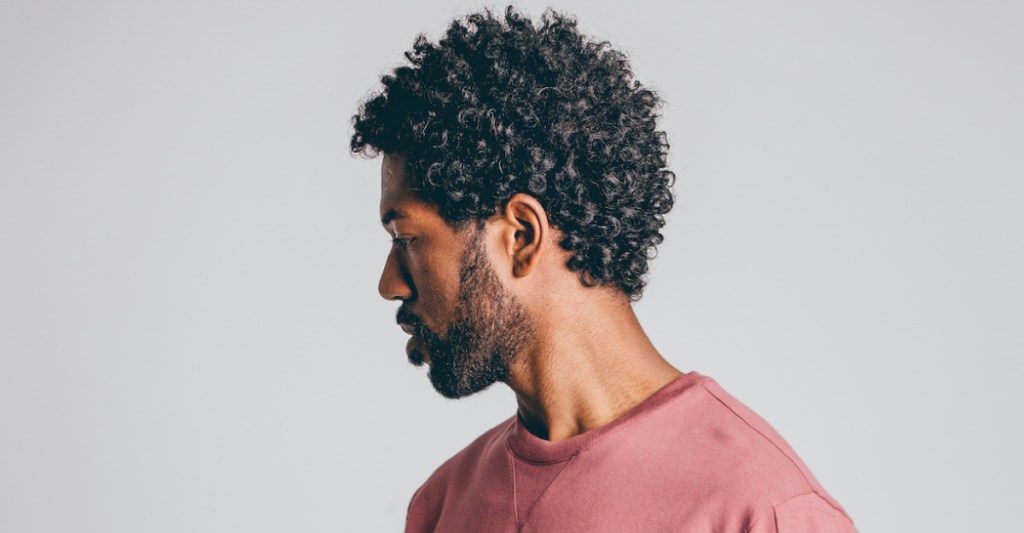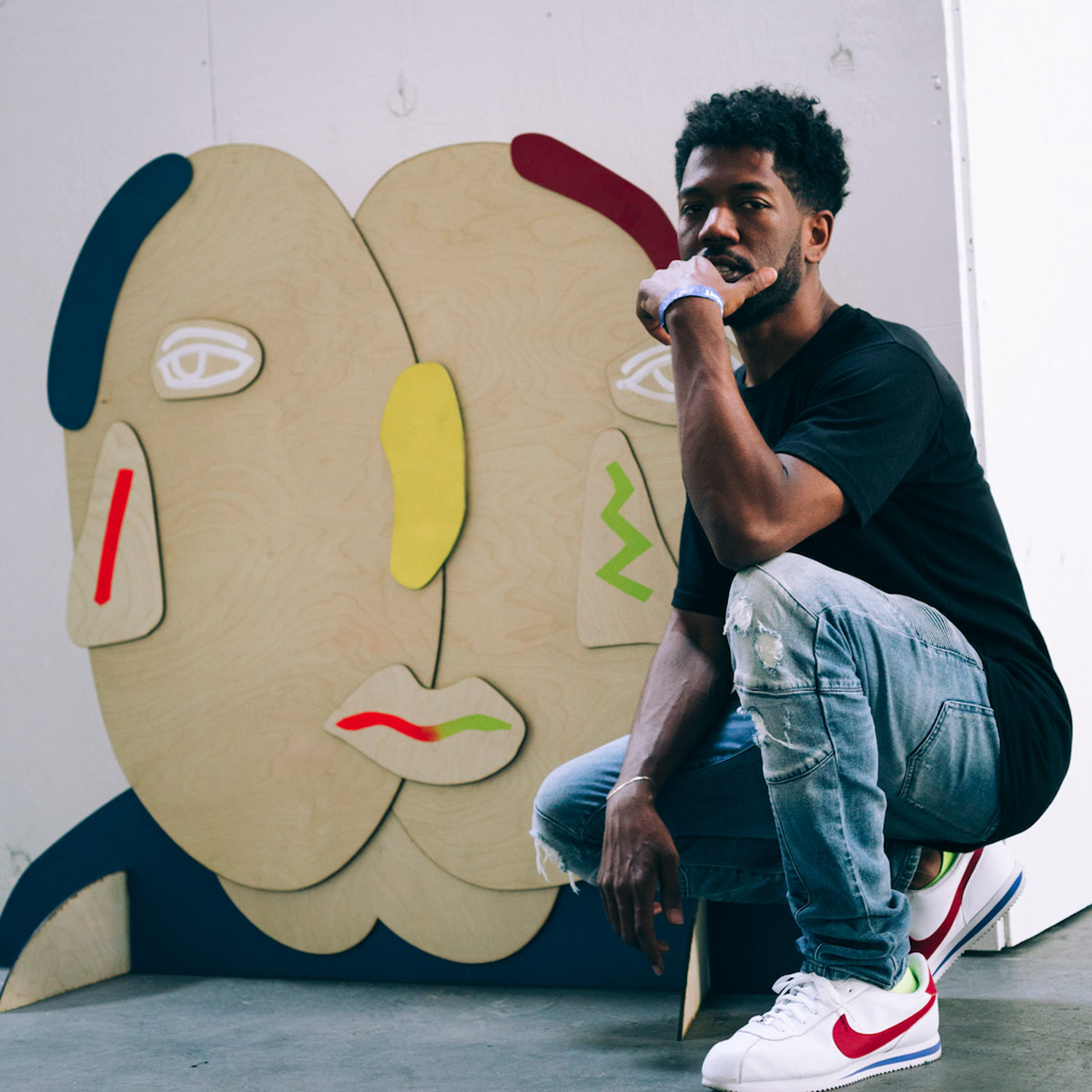Art as a Healing Expression: An Afternoon with Brandon Breaux, Part 2

Photo credit: Bryan Allen Lamb
Mental health is more than a trend for visionary artist and entrepreneur Brandon Breaux, who describes art as a catalyst for both individual and collective healing. Art creates a bridge from experience to understanding, but people may not recognize the connection or the need.
By engaging in the creative process, we quiet the thinking brain and give voice to the unconscious. The cathartic result presents a pathway to understanding ourselves and our mental health—not in pieces, and not only through the veil of diagnosis, but as a whole, integrated person.
Breaux believes that many people have artistic talents but they do not have the support to nurture their talents and they do not have the context in which they can place value on art. Breaux’s father was a musician and artist. Breaux himself recalls an appreciation for expressing thoughts and feelings through creativity from childhood on. He grew up with family members who had challenges with mental health, which Breaux believes allowed him to develop awareness and compassion for people who experienced difficult times.
Instead of ignoring people who exhibited behaviors consistent with mental health conditions, Breaux learned to listen to people and develop increased awareness in his language. He found that paying attention to language and decreasing stigma helped him and helped others when they experienced difficulties.
“What I noticed growing up is I would pick up if people had a psychological disorder or had a behavioral disorder a lot faster than other people, because it was more part of my life experience,” Breaux said. “I would be more receptive to people when they exhibited irrational or different behaviors. I wasn’t as dismissive as other people.”
Breaux encourages people to reach out to one another when they notice a friend who is struggling, while still taking care of themselves.
“If you’re going through something and you see others exhibiting similar behavior, you might know when to demonstrate self-care,” he said, adding that you can then encourage others to do the same.
Breaux experienced anxiety finding his unique voice within art, despite growing up in an environment where artistic expression was valued.
“My dad was a painter, so I had an idea that I might be good at this,” he said. “It’s a part of who I am, and my life, and my family.”
While he has an appreciation for art, Breaux also acknowledges that art paired with depression resulted in feelings of detachment for him.
“Art can be isolating, it’s something you do on your own,” he said.
Breaux changed mediums as he explored his identity as an artist growing up and started dancing in high school as a means of expression. Although he didn’t understand how art served him at first, he began to experience a deeper, more spiritual connection and returned to drawing and graphic design. By transitioning between multiple modalities—painting, drawing, computer/graphic design, clothing—he learned to express different perspectives and appeal to a variety of visual experiences.
“How you see reality and what is in front of you is uniquely yours in a way,” he said. “We all sometimes forget that we view the world through our lens and not everybody’s lens at the same time.”
The heart of all art, according to Breaux, is perspective. “I can say I visualize a car. The car you see in your head is definitely going to be different than the car I see in my head,” he said. “Where I started to find value in art was artists’ unique perspectives.”

Breaux believes there is a spiritual connection between an artist and a piece of art, where something outside of the artist speaks to the canvas or whatever medium they are working on. Breaux said that his spirituality, mind, and perspective continued to grow in sophistication as he continued to train his hands through art school.
When Breaux was a child he used to draw every day. He began taking art classes and attended conventions to buy comic books and show his artwork to other artists, hoping to learn from their feedback. He recalled that some artists were not very open to talking with him and others were open to providing feedback. Breaux had fun attending conventions but also noticed he did not see any Black artists at the conventions. This led Breaux to believe that becoming an artist might be difficult so he decided to learn multiple modalities.
“I’m glad … because it opened me up to graphic design,” he said.
Although Breaux was able to take art classes, attend conventions, and share his work with other artists as he was developing his own craft, he recognizes that many people do not have similar resources to express creativity and emotions.
“When there are cuts in education, the things that help us cope are the first things to be cut, like art,” he said.
As a result of funding cuts to the arts and his own experience of seeing too few artists of color at conventions, Breaux created FieldTrip, an experiential activity where he brings Chicago-based children to local art exhibits. When discussing his inspiration for FieldTrip, Breaux said: “I thought to myself, I have to get as many kids down here to see this, because the work has the potential to inspire minds of our brilliant youth.”
Additionally, Breaux partnered with the National Alliance on Mental Illness (NAMI), a grassroots organization raising awareness about mental health. He shares 50 percent of the proceeds from his Mental Health Is Real collection to support those in need through contributions, education programs, public policy, and the NAMI HelpLine.
One thing people notice about art and museums is that there is an illusion of access. Some people believe art and cultured events, and even mental health care, are only available for the wealthy. This includes the costs related to creating art in purchasing space and supplies along with the entrance fees to museums where people can appreciate art. In addition to making art accessible to people, Breaux discussed art’s meaning in society, accessibility to training and role models, and why it is important to encourage arts education.
My afternoon with Breaux leads to a larger conversation about the need to provide resources for people to express themselves creatively as a way to better understand their own sense of psychology and mental health. The use of art in healing has been widely researched, and it is very clear that our world needs it. Be well and create your own art as a way to see and appreciate the beauty in this world.
Connect with Part 1 of my conversation with Brandon Breaux to learn more about his exploration of mental health through art.
Share this on social media:
Citation for this content: Northwestern University’s online Master of Arts in Counseling program.

